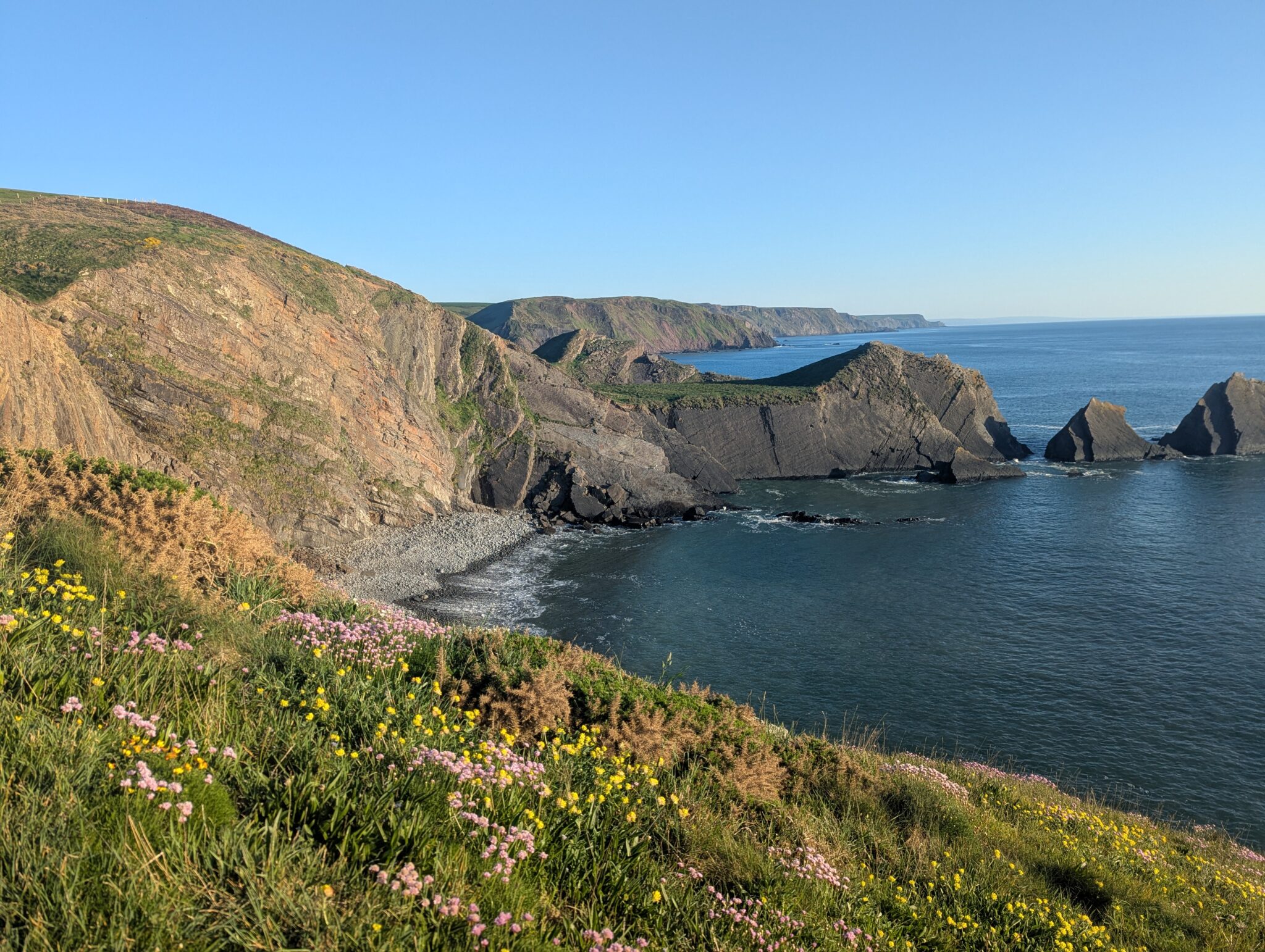As most Devon Special Species don’t have Species Opportunity Areas mapped on the Viewer the main geographical areas where they are found (and where actions should be targeted) are set out below. This section will be reviewed and updated before final publication and we welcome comments (and pictures – those below are draft).
*= Species Opportunity Area mapped on the Viewer.
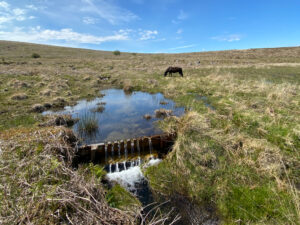
Species found across Devon
Devon Special Species:
Otter, hedgehog, dormouse, harvest mouse, barbastelle bat, serotine bat, lesser horseshoe bat, grey seal, farmland birds (other than cirl bunting), spotted flycatcher, kestrel, birds of towns and villages, migratory fish (other than allis shad), toad, small pearl bordered fritillary, brown hairstreak butterfly, spiny cockle, fungi and lichens of veteran trees, woodlands and ancient grasslands

Dartmoor National Park and the SW Dartmoor Downs
Habitats: Bogs, valley mires, heaths, acid grasslands, species-rich rush pastures, Ancient woodlands and wood pasture, wildlife-rich grasslands.
Devon Special Species:
Mammals: *beaver, *water vole, *greater horseshoe bat, *grey long-eared bat, pine martens
Birds: Heath, moor and rough grassland birds (*dunlin, *curlew, *snipe, *whinchat, cuckoo, tree pipit, Dartford warbler, kestrel etc), woody birds (*pied flycatcher, *willow tit, lesser spotted woodpecker, *wood warbler, lesser redpoll, nightjar). Cirl buntings
Reptiles & amphibians: Great crested newt
Moths and butterflies: *Marsh fritillary, *narrow-bordered bee hawk-moth, *pearl-bordered fritillary, *high brown fritillary, *heath fritillary, moths of Dartmoor broadleaved woods
Bees, ants and wasps: Billberry bumblebee
True flies: *Bog hoverfly, valley mire flies, *Devon globetail hoverfly , wet woodland flies
Beetles: dung beetles, blue ground beetle
Dragonflies: southern damselfly, scarce blue-tailed damselfly
Spiders and harvestmen: Dartmoor bog spiders
Molluscs: Upland rainforest snails
Crustacean: fairy shrimp
Flowering plants and ferns: Great sundew, lesser butterfly orchid, greater butterfly orchid, frog orchid, wood bitter vetch, Deptford pink, Forked spleenwort, Toadflax-leaved St John’s wort, heath lobelia. South West Dartmoor Down Specialist plants (chamomile, Cornish eyebright, marsh clubmoss),
Lichens: Dartmoor granite lichens, upland rainforest lichens, deadwood lichens, veteran tree lichens, wet woodland lichens, lichens of mines and quarries
Bryophytes: Many-leaved pocket moss
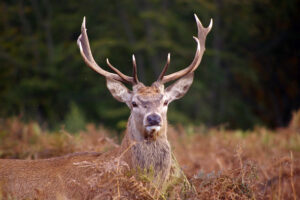
Exmoor National Park
Habitats: Bogs, valley mires, heaths, species-rich rush pastures, Ancient woodlands and wood pastures, maritime cliff and slope, rocky shore.
Devon Special Species:
Mammals: *beaver, *greater horseshoe bat, *grey long-eared.
Birds: Heath, moor and rough grassland birds (snipe, *whinchat, lesser redpoll, tree pipit, Dartford warbler, grasshopper warbler, kestrel,), woody birds (*pied flycatcher, *willow tit, *wood warbler, lesser redpoll), *cliff nesting sea birds.
Moths and butterflies: *high brown fritillary
Bees, ants and wasps: Billberry bumblebee
Beetles: Six-spotted longhorn beetle
Flowering plants and ferns: Rare whitebeams
Lichens: Upland rainforest lichens, deadwood lichens, veteran tree lichens, wet woodland lichens
Bryophytes: Dumortier’s liverwort (Watersmeet SSSI)
See Morte Point to Somerset Coastal Wildbelt
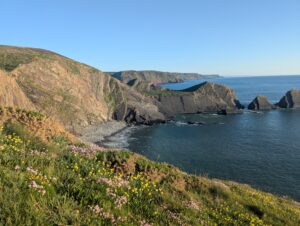
North Devon Protected Landscape
Habitats: Maritime cliff and slope, rocky shore, sand dunes and other coastal habitats, Culm mosaic, Ancient woodlands.
Devon Special Species:
Mammals: Otter, *beaver catchment, *greater horseshoe bat, barbastelle, serotine, lesser horseshoe,
Birds: Farmland birds including cirl buntings.
Reptiles & amphibians: Great crested newt, toad
Moths and butterflies: Small pearl-bordered fritillary
Bees, ants and wasps: Brown-banded carder bumblebee, moss carder bumblebee
See Cornwall to Morte Point Coastal Wildbelt for coastal species.
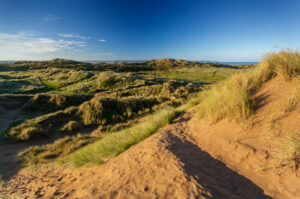
North Devon Biosphere
Habitats: Maritime cliff and slope, rocky shore, sand dunes and other coastal habitats. Culm mosaic (species rich rush-pasture, wet heath, wet woodland).
Devon Special Species:
Mammals: *beaver catchment, *water voles, *greater horseshoe bat
Birds: Heath, moor and rough grassland birds (snipe, *whinchat, lesser redpoll, tree pipit, grasshopper warbler, Dartford warbler, kestrel,), cirl buntings, woody birds (*pied flycatcher, *willow tit, *wood warbler, lesser redpoll), *cliff nesting sea birds.
Reptiles & amphibians: Great crested newt, toad
Moths and butterflies: *high brown fritillary, *Marsh fritillary, *narrow-bordered bee hawk-moth, *wood white
Bees, ants and wasps: Brown-banded carder bumblebee, moss carder bumblebee, billberry bumblebee
True flies: wet woodland flies, *Devon globetail hoverfly, Leucophora sponsa (Halsdon)
Crustaceans: Fairy shrimp
Flowering plants: Lesser butterfly orchid, Rare whitebeams incl. Devon whitebeam
Lichens: Upland rainforest lichens, quarry lichens (Meeth)
Bryophytes: Dumortier’s liverwort (Watersmeet SSSI)
See Cornwall to Morte Point and Morte Point to Somerset Coastal Wildbelt for coastal species.
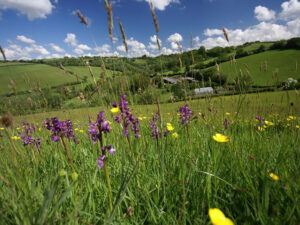
Teign Valley and Haldon
Habitats: Heath, Species-rich rush pastures, rocky gorge, Ancient woodlands, arable.
Devon Special Species:
Mammals: *beaver, *water vole, *greater horseshoe bat, *grey long-eared
Birds: cirl buntings, woody birds (*pied flycatcher, *wood warbler), nightjars, Dartford warbler
Reptiles & amphibians: great crested newt
Moths and butterflies: *pearl-bordered fritillary, *high brown fritillary, moths of Dartmoor broadleaved woods
Spiders and harvestmen: Teign Gorge rock spiders
Molluscs: Upland rainforest snails
Flowering plants and ferns: lesser butterfly orchid, greater butterfly orchid, Forked spleenwort, Toadflax-leaved St John’s wort, arable plants (narrow-fruited corn salad)
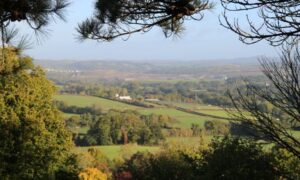
Bovey Basin
Habitats: Heathland.
Devon Special Species:
Mammals: *greater horseshoe bat, *grey long-eared, Bechstein’s
Birds: cirl buntings, woodlark
Reptiles & amphibians: great crested newt
Moths and butterflies: *pearl-bordered fritillary, *high brown fritillary, heathland moths
Bees, wasps, ants: Heath potter wasp, narrow headed ant.
Dragonflies: southern damselfly
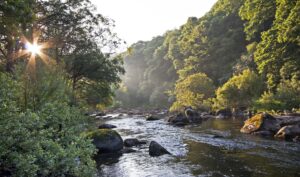
South Devon Protected Landscape
Habitats: Coastal habitats, watercourses, arable.
Devon Special Species:
Mammals: *water vole, *greater horseshoe bat, *grey long-eared
Birds: cirl buntings
Reptiles & amphibians: Great crested newt
Flowering plants: arable plants
See Torbay to Start Point, Start Point to Bolt Tail and Bolt Tail to Plymouth Coastal Wildbelts.
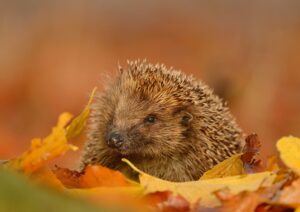
Plymouth
Habitats: Coastal habitats, calcareous grasslands, green spaces and quarries.
Devon Special Species:
Mammals: *greater horseshoe bat, *grey long-eared, beaver catchment
Spiders: Plymouth arachnids – horrid ground weaver and hedgehog harvestman.
Flowering plants: field eyngo, Plymouth pear, Deptford pink
See Plymouth Coastal Wildbelt
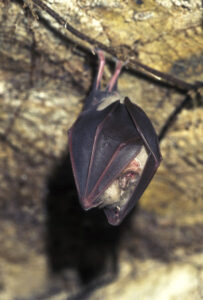
Tamar Valley Protected Landscape
Habitats: Orchards. Mines. Small area of heath/acid grassland.
Devon Special Species:
Mammals: *greater horseshoe bat sustenance zone, *beaver catchments
Reptiles & amphibians: Great crested newt
Moths and butterflies: *pearl-bordered fritillary, *high brown fritillary
Flowering plants: Possibly SW Dartmoor Down Specialist plants (chamomile, Cornish eyebright, marsh clubmoss)
Lichens: lichens of mines and quarries
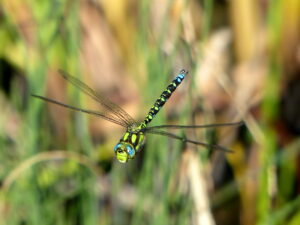
East Devon Protected Landscape
Habitats: Heaths, coastal habitats, lowland acid grassland, calcareous grassland.
Devon Special Species:
Mammals: *greater horseshoe bat, *grey long-eared, *Bechstein’s
Birds: cirl buntings, woodlark, willow tits, tree pipit, nightjar, lesser redpoll
Reptiles & amphibians: great crested newt
Moths and butterflies: *wood white butterfly, heathland moths
Bees, wasps, ants: Heath potter wasp
Dragonflies: southern damselfly
See Dorset to Sidmouth Coastal Wildbelt and Sidmouth to Torbay Coastal Wildbelt.

Blackdown Hills Protected Landscape
Habitats: Mosaic of species rich rush-pasture, wet heath, wet woodland. Lowland acid grassland, heath.
Devon Special Species:
Mammals: *beaver catchment, *water voles, *greater horseshoe bat, *grey long-eared bat, *Bechstein’s bat
Birds: *Pied flycatchers, *willow tit
Reptiles & amphibians: Great crested newt
Moths and butterflies: *Marsh fritillary,
Bees, ants and wasps:
Flies: *Devon globetail hoverfly, wet woodland flies, valley mire flies
Dragonflies: Southern damselflies (re-introduction failed)
Flowering plants: Lesser butterfly orchid, heath lobelia, great sundew
Lichens: wet woodland lichens
An overview of some of the key Devon Special Species found in the Coastal Wildbelt stretches is given below.

Dorset to Sidmouth
Mammals: *Greater horseshoe bat, * *Bechstein’s bat, *grey long-eared bat
Bees: broad-faced burrow bee, buff-banded mining bee
Flies: Spanish snout cranefly, Least cigar-gall fly, Cryptonevra consilimis and the east coast undercliffs fly group
Moths: White spot moth, Devonshire wainscot, Morris’ wainscot, everlasting pea blister moth, wood white and the east coast moth group.
Beetles and crickets: Cliff tiger beetle, scaly cricket
Crustacean: fairy shrimp
Dragonflies: Norfolk hawker (Seaton marshes)
Flowering plants: Nottingham catchfly, early gentian, white horehound
Lichens and bryophytes: Maritime lichens, Solm’s screwmoss

Sidmouth to Torbay
Mammals: *Greater horseshoe bat, * *Bechstein’s bat, *grey long-eared bat
Birds: Cliff nesting seabirds (Sandy Park), cirl buntings
Flies: Variable meadow fly?
Moths: Devonshire wainscot, everlasting pea blister moth and the coastal moth group
Flowering plants: Bithynian vetch (Exmouth and Sandy Park)

Torbay
Birds: Cliff nesting seabirds, cirl buntings
Moths: Torbay limestone moths
Beetles: Roundhead roughneck rove beetle
Moths: Goldilocks case bearer, white-headed detritus and the limestone moth group, Devonshire wainscot, beautiful gothic and the coastal moth group.
Pants: Torbay limestone specialists plants – goldilocks aster, small restharrow, honewort, small hare’s ear, white rock-rose. Whitebeams
Maritime lichens
Bryophytes: Rabbit moss, Levier’s beardless-moss
Fungi

Brixham to Start Point
Birds: cirl buntings
Bees:
Flies: variable meadow fly
Beetles: lizard weevils
Moths: Devonshire wainscot, beautiful gothic and other coastal group moths.
False flat-backed millipede
Dragonflies: Norfolk hawker (Slapton)
Plants: rare arable plants, strapwort (Slapton)
Maritime lichens
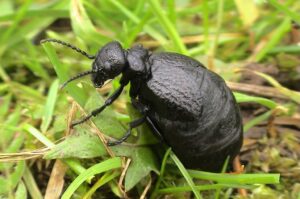
Start Point to Bolt Tail
Birds: cirl buntings
Bees: Six-banded nomad bee and long-horned bee
Flies: Devon red-legged robberfly , variable meadow fly
Spiders: Moon spider and other Prawle cliff spiders
Beetles: Oil beetles, lizard weevils
Moths: Devonshire wainscot, beautiful gothic and other coastal group moths.
Plants: rare arable plants, slender bird’s foot trefoil
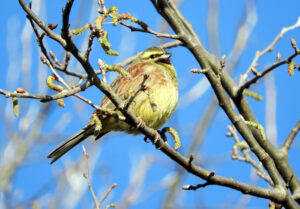
Bolt Tail to Plymouth
Birds: cirl buntings
Beetles: lizard weevils
Flies: variable meadow fly
Moths: Devonshire wainscot, beautiful gothic and moths in the coast group.
Flowering plants: Shoredock, rare arable plants, slender bird’s foot trefoil, dwarf spikerush (Avon estuary)
Bryophytes of south Devon wooded creeks – awl-leaved ditrichum, Turner’s threadwort

Plymouth
Fish: Allis shad
Flowering plants: triangular clubrush
Bryophytes of south Devon wooded creeks

Cornwall to Morte Point
Mammals: *Greater horseshoe bat
Birds: cirl buntings
Bees: Brown-banded carder bumblebee and the moss carder bumblebee.
Flies: North Devon sand dune flies group.
Beetles: Lizard weevil, click beetle
Moths: Devonshire wainscot, scarce black neck and other coastal moths. Sand dune moth group.
Spiders: Yellow-striped bear spider
Molluscs: sand bowl snail
Flowering plants: sand dune plants
Lichens: southern oceanic and maritime lichens
Bryophytes: cordate beardmoss
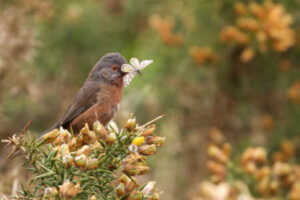
Morte Point to Somerset
Birds: Cliff nesting seabirds
Moths: Devonshire wainscot, scarce blackneck and moths in the coast group.
Molluscs: Celtic sea slug
Plants: whitebeams
Lichens: Maritime lichens
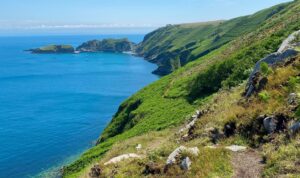
Lundy
Birds: Cliff nesting seabirds
Beetles: Lundy cabbage beetles
Plants: Lundy cabbage
Lichens: Maritime lichens

